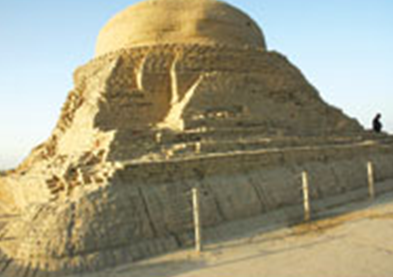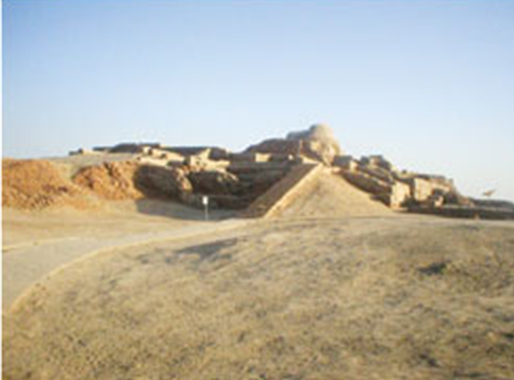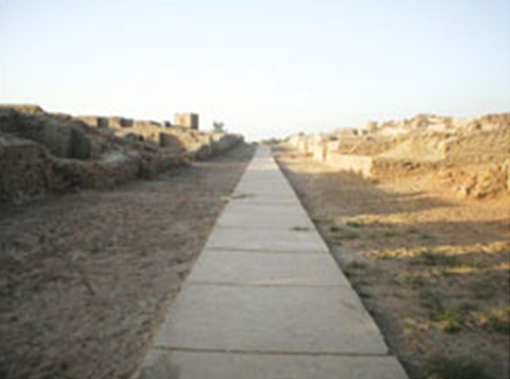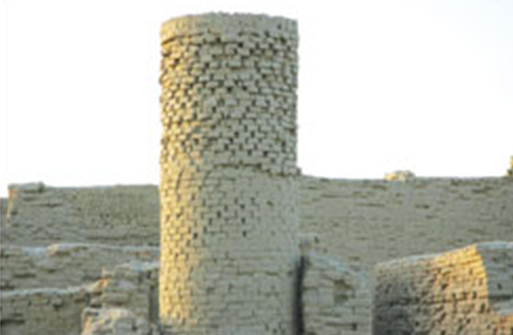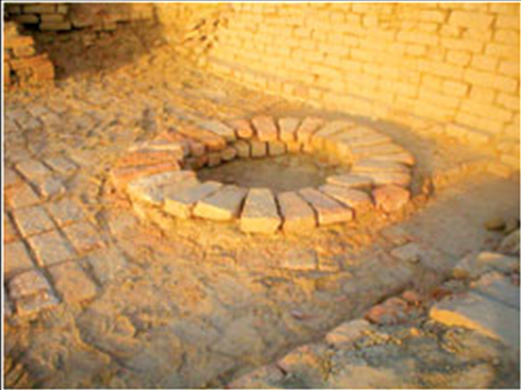Mohenjodaro
This is a collection of articles archived for the excellence of their content. Readers will be able to edit existing articles and post new articles directly |
Mohenjodaro
The mound of the dead
Text and photographs by Ameer Hamza
If you’ve seen the back of a ten-rupee currency note carefully, you must have seen the photograph of a peculiar mound on it. It is called the ‘Mound of the Dead’ by archaeologists, and it is located at Mohenjodaro (literally, the mound of mohen).
Mohenjodaro was one of the principal cities of the Indus Valley civilisation. It flourished around 2,500BC and is one of the archaeological sites in Pakistan on Unesco’s list of protected monuments.
Sir John Marshall supervised its excavation in the early ’20s and his car is still in the Mohenjodaro museum, representing his presence, struggle and dedication to the place.
As a result of the excavation, almost one-third of the old city was recovered, revealing for the first time the remains of one of the most ancient civilisations in the Indus Valley. Typical of most large and planned cities, Mohenjodaro had streets and buildings.
The area roughly lodged 5,000 people, and had houses, a granary, baths, assembly halls and towers. The citadel included an elaborate tank or bath created with fine quality brickwork and drains; this was surrounded by a veranda. Also located here were a giant granary, a large residential structure and at least two aisled assembly halls.
From the excavations one can make out that the city was divided into two different sections; the lower and the upper parts. The upper area was man-made, and most probably it was from here that the rulers ruled. There was a great bath near this mound which everyone was allowed to use. The huge granary remnants are still beautiful even today.
The lower section was where the common man lived. The streets cut each other at exactly 90 degrees. They were nine metres long. Alongside the streets ran the drainage system, which was so advanced that no civilisation of its time could match it.
The houses were well-built and were mostly made in block style, with small windows for ventilation. Some of the houses were huge and some had a kind of plaster on them. However, most of that plaster has vanished now.
The most famous features of Mohenjodaro that have survived are the priest king wearing an ajrak, the square bull seals that have also been found in Mesopotamia (Iraq), the dancing girl and the weights they used. Its text has not been deciphered yet, which makes it impossible to ascertain their true social, political and religious life.
To add mystery to the Mohenjodaro drama, we don’t know what happened to the Indus Valley civilisation. It seems to have been abandoned about 1700BC. It is possible that a great flood destroyed it. The moving tectonic plates that created the Himalayas may have caused a devastating earthquake. It is also possible that its inhabitants may have been defeated by another civilisation.
Unfortunately, for all its charm and mysteries, this magnificent ‘city of the dead’ is in danger of getting soaked in salt — literally. Saltish water is rising rapidly, and if no action is taken immediately then we might lose this priceless heritage forever.
